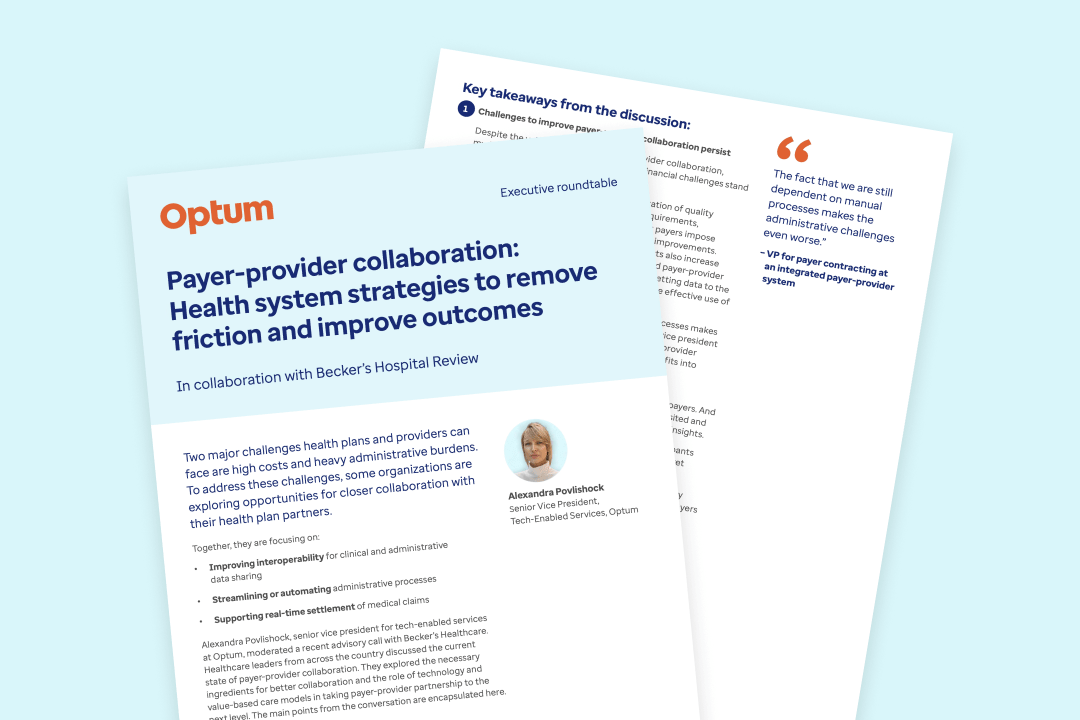Identify two key influences affecting your denial challenge
When analyzing their denial challenge, many providers focus on the overall denial rate and appeal success rate. However, these two metrics don’t give a complete or, in some cases, accurate picture of a hospital’s denial challenge.
These common denial metrics don’t account for two key influences on denials: self-denials and peer-to-peer appeals. Self-denials don’t appear on denial reporting and aren’t often tracked. Though often heavily underutilized, success at the peer-to-peer level avoids denials and isn’t reflected by denial and overturn rates.
Through this paper, Optum shows why hospitals cannot afford to neglect these two critical indicators of an organization’s denial challenge and how to account for them effectively.
Related healthcare insights

White paper
Discover payment integrity best practices to help you achieve your in-year cost savings goals.

Article
Learn how the InterQual level of care team tackled a content development challenge following updated societal guidelines for acute coronary syndrome.

White paper
Tech and value-based care can improve payer-provider collaboration, reduce admin burden and enhance patient outcomes through data sharing.
